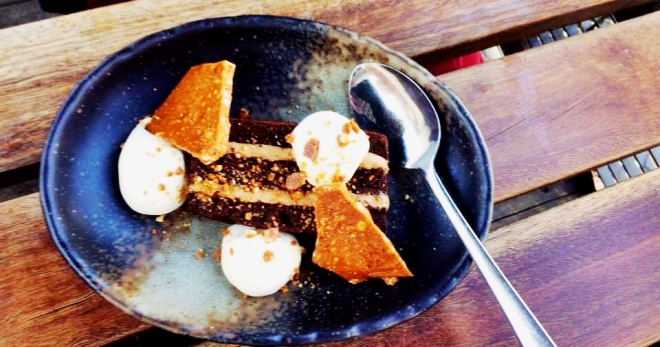Winter is back, and although I keep telling myself that it’s not as bad as last year, the biting cold that greets me with hostility every morning, leaves me more often than not searching for comfort food to bring me some warmth during Melbourne’s coldest months.
Melbourne however, also offers many other experiences to bring one out of the wintry chill, including the NGV. This winter, the Van Gogh and the Seasons exhibition has come to the gallery and my friends and I were so excited to see it. So, on a Friday afternoon, we made our way from Flinders Street Station, over the Yarra, to the gallery. Naturally, Van Gogh attracts a crowd, but we didn’t expect it to be so packed. We tossed up waiting in a line for 3 hours, and decided against it, opting to find a “cool” bar and just chat.
Despite the cold, we decided on Rooftop, a (surprise, surprise) rooftop bar on Swanston St on top of Curtin House. Having been here before, we were keen for some good vibes, fresh air, reasonably priced drinks and the option of food. But alas, fate would be against us again. Standing in the lift, on the way up to the top floor, we were dismayed and slightly amused, to discover that the bar was closed until August. Defeated, we decided to head back to Flinders Street Station and head to Arbory, a riverside bar and restaurant which also borders the train station.
A classic, Melbourne style bar/restaurant, Arbory is one of the bars to be in at the moment, and its convenient and pretty location make it quite an enticing little hide. We headed down the steps by the bridge to the riverside, and, after a few metres entered Arbory. Popular for both it’s food and drinks, the long stretch of deck was busy, but not full (granted that it was only 2 in the afternoon). Gas heaters kept us warm as we mulled over the menu, trying to make a decision on what food and drinks to order.
My friend settled on a Pink Gin Spritz, spritzed up with rosemary, while I went for a hot Spiced Apple Cider. I was tossing up between that and a hot chocolate cocktail, but $9 vs. $15 had me sold. Our other friend opted to go drinkless and instead settled for a chocolate/coffee cake, which looked, and tasted, quite delicious. To accompany our drinks, we decided on the classic hot chips. Crinkle cut, thick and perfectly crispy, the humble potato did not disappoint, and, although more expensive than the chips from a local fish and chips shop, they were quite tasty and worth the splurge. I’ve also been told that the mushroom and haloumi burger is quite good, although the menu is seasonal which is both a plus and a minus, only because favourites can’t be enjoyed year round!

Overlooking the Yarra River with the view of Southbank through wintry trees created a lovely backdrop for a splendid afternoon spent chatting, eating and drinking. I wouldn’t go to Arbory for a cheap drink, but if you want a nice drink, and some good food in an iconic Melbourne location, look no further. A live DJ also spins vinyl in the background, so the music, although quite typical of many Melbourne bars, is quite good.
Whilst our day began with a few disappointments, we ended up having a lovely afternoon. And that’s what’s so good about living in city like Melbourne; there’s so much to do and experience. Regardless, wherever you are in the world, with good food and good company, good times are also chucked in, free of charge.






